The Farm Barn and Its Environs: Strength and Gentleness
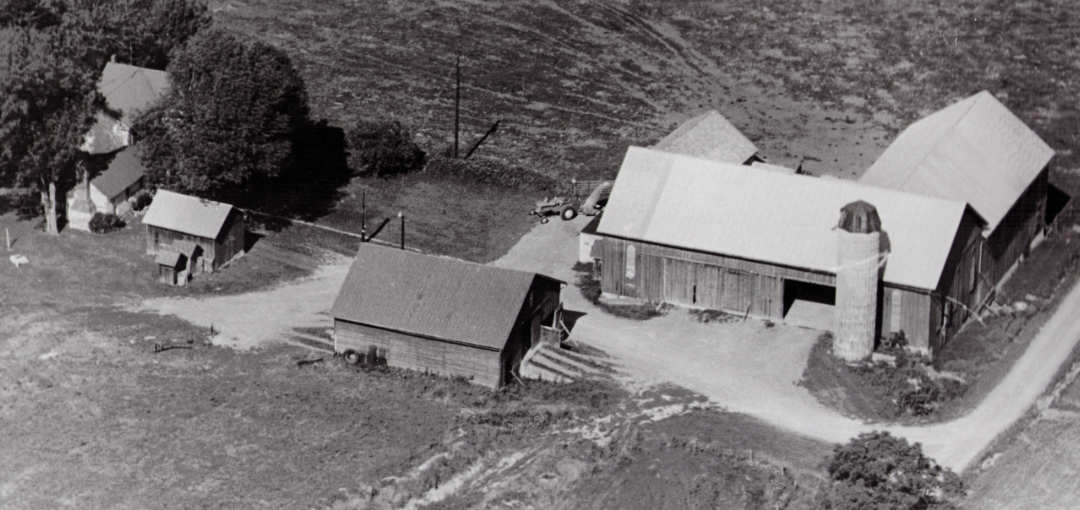
I have been told that the barn that we had when I was growing up was the largest in that area of Montour County, Pennsylvania. I cannot attest to this fact, but the L-shaped structure certainly had nooks and crannies galore to hide in, poke into, and crawl through.
In addition, the outside areas were froth with buildings, many of which were documented in a 2015 article. The structures permitted a boy to run, play, and hide from a hunting father, who wanted to put the boy to work! The original milk house (used before the modern milk house was built in about 1960) kept cans of cold milk in its lower hold. There was a washing station above it, and I marveled at the muscular ability of my father, Homer S. Hagenbuch (b. 1916), to lift those out of that chasm.
The building beside this was a combination pigpen on the first floor and, above it, the chicken house—both never lacking in snout or fowl. I remember Dad taking those piglets and turning them back down to remove testicles, making them into shoats which are analogous to beef steers. I can hear the squeals from the little piggies and the mews of the hovering cats, who were waiting for their “treats” as they were cut free by my Barlow knife when Dad asked to borrow it.
That Barlow knife was a prized possession, which every farm boy was given to use. It was employed for this macabre event, although mainly used to cut the twine from bales of hay and straw. Those small piglets would eventually grow into behemoths. The huge hogs which were shown at fairs by our cousins, the brothers Bruice (b. 1913) and Andrew “Andy” Hagenbuch (b. 1911).
Winter brought frozen silage, which needed sliced with a chainsaw from the open-air, in-ground silo and hauled into the barn to thaw. In a swampy area where the ice covered some hibernating amphibians, Dad had once hatched an idea for a spring in the early 1960s. He wanted to create a small pond for the cattle to get water. However, it never really came to fruition. Instead, this region turned into a muddy mess that young boys enjoyed slopping around in.
There was a dry field that acted as a sheep pen at one time. Beside it was always laid out a large garden patch that followed the edge of the smoke house and old, fallen down bake oven. I remember the fetid smell within the smokehouse and can recall a few hams hanging inside. The bake oven was in disrepair. The bricks were broken, and when I was very young, I always wondered what the structure was supposed to be!
I believe I had once asked my grandmother, Hannah (Sechler) Hagenbuch (b. 1889), that question. Grandma Hagenbuch answered that she had actually used the bake oven from time to time, a number of years before. A brooder house (chicken coop) sat beyond the machinery shed that was so eloquently described by my brother, Bob, in a previous article.
Old crocks were housed in that shed, along with so much other paraphernalia. These were used for many purposes. One of the most important was fermenting the cabbage that made sauerkraut. The sauerkraut crocks were opened for the New Years Day feast which has been written about before.
Now, this article must end as I look across the room I am now sitting in—the front room in my house—with a warm fireplace looking back at me. The photo I am looking at presently has Grandma Hagenbuch holding some flowers, and she is framed by a grapevine to her left. I am reminded that hollyhocks were her favorite flowers, in addition to the African violets she is holding in the image. Hollyhocks grew at the edge of our farm’s tractor shed.
I’ve taken a circular route around the farm. This began with the strong, mighty barn and ended with the gentleness of a beloved family member, Grandma, whose favorite flowers grew by the tractor shed.

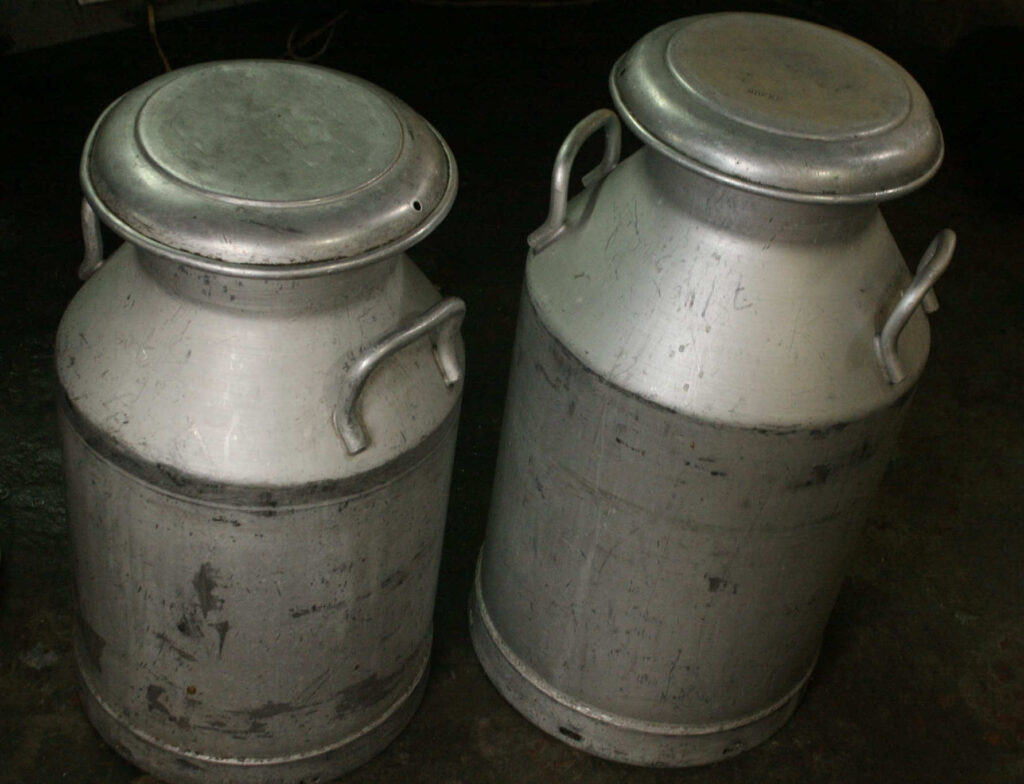
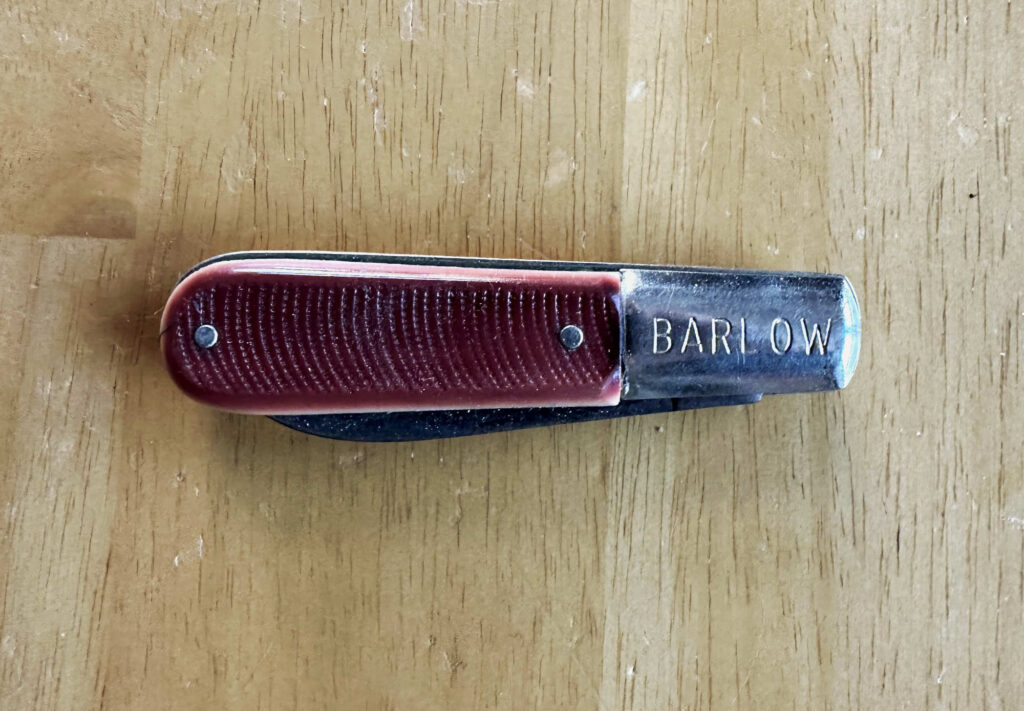
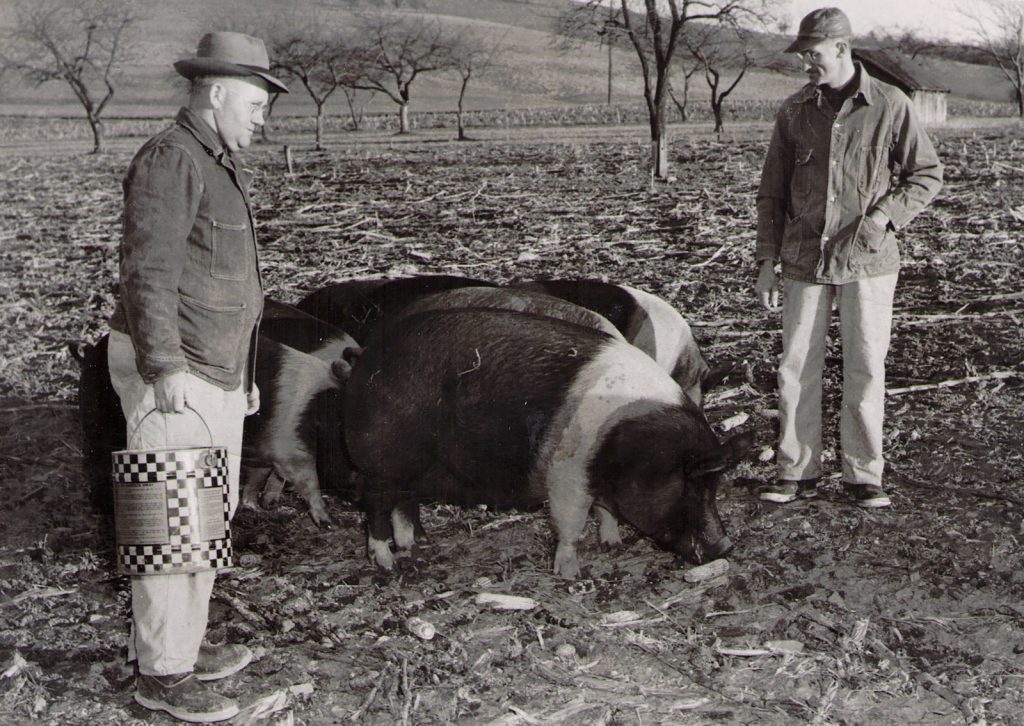
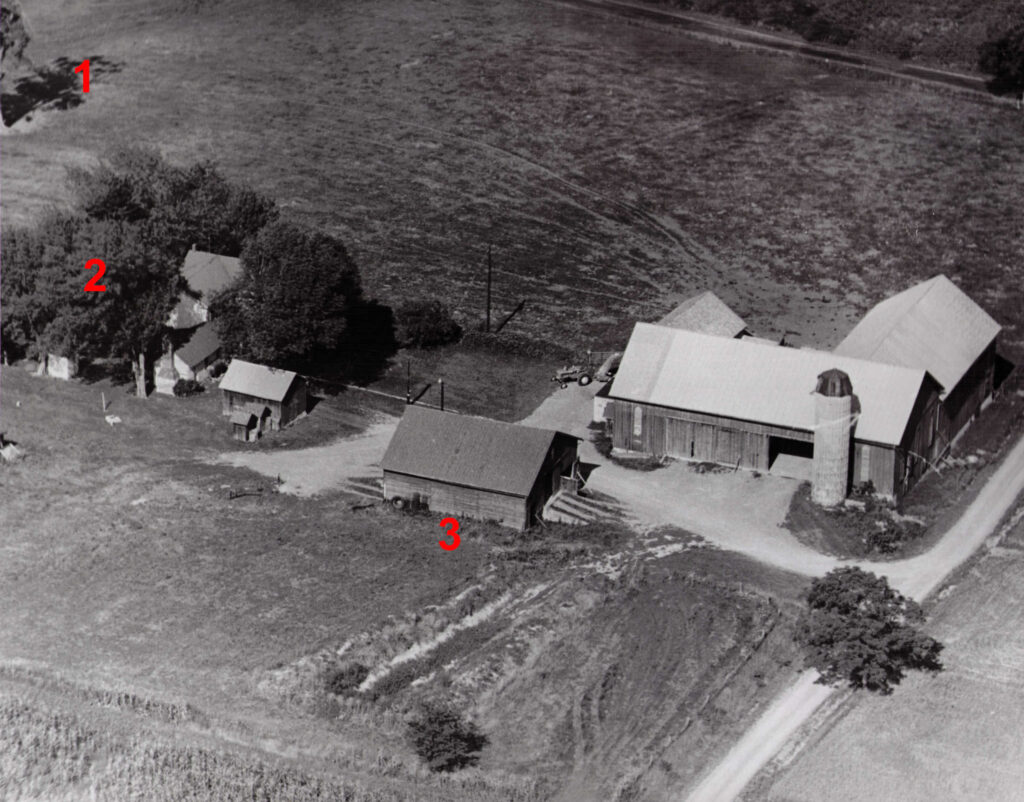
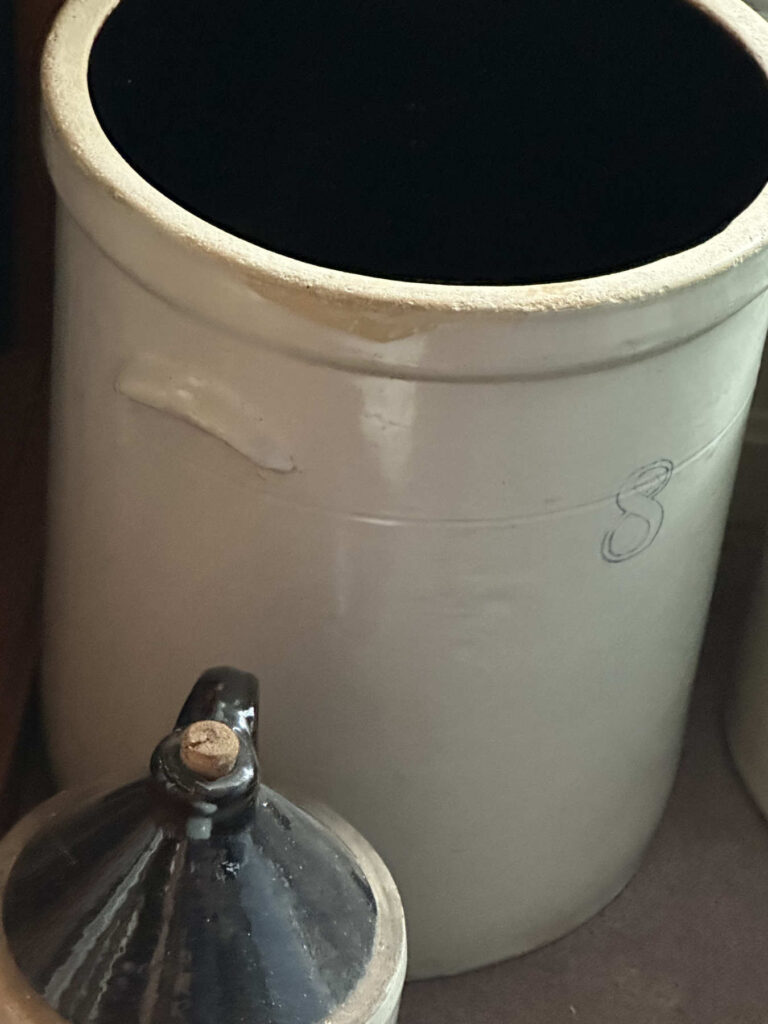
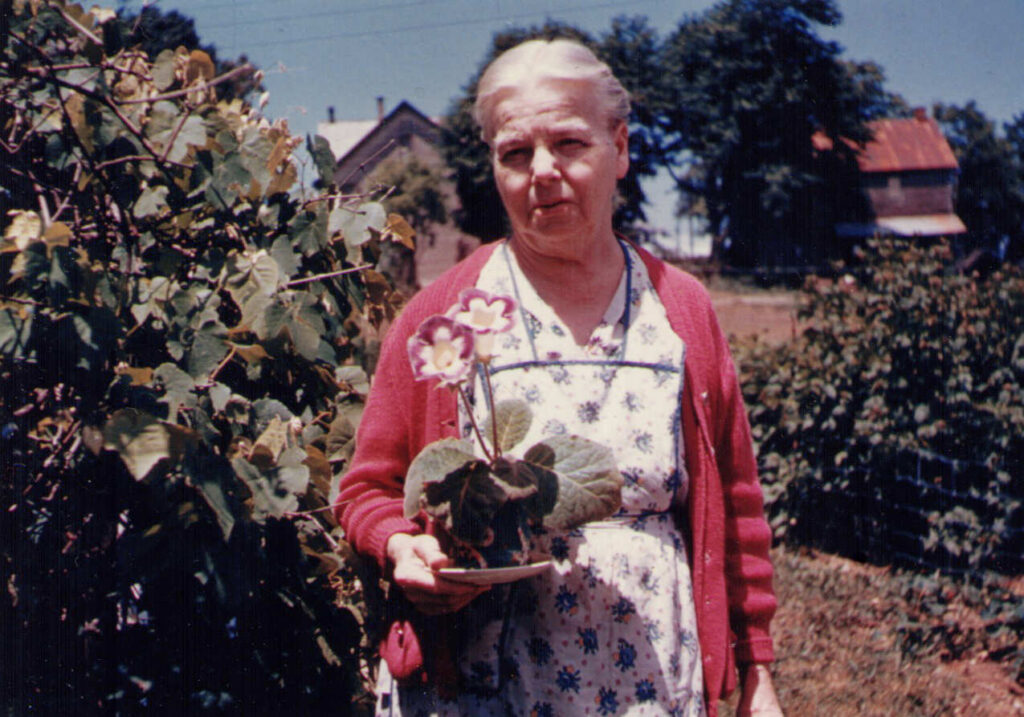
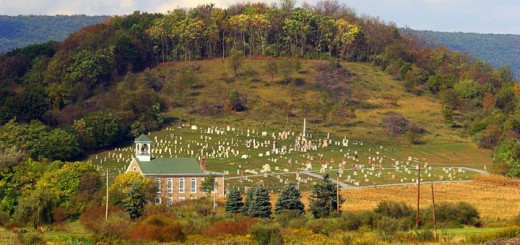
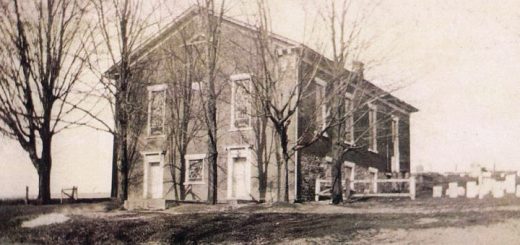
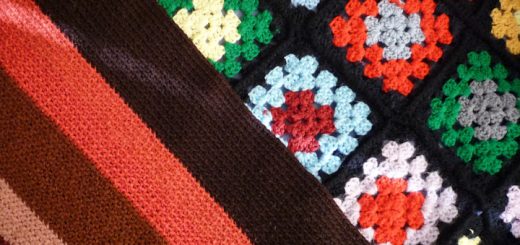









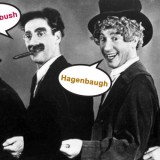


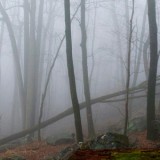
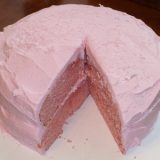
This brings back many memories and lots of stories about life on a working farm . And I do mean working !! I wasn’t allowed anywhere near the piglets being castrated . Being I was a girl ! I remember the outdoor oven , a source of curiosity . And I actually roller skated in the Grainery , in the barn , as it had a nice wooden floor ! We had a wonderful childhood , caring parents , who taught us to work AND square dance !! Thank you , Mark .
Mark,
Reading your article, It is amazing what you will remember if you just take a few moments and think. There are carvings on our barn. One is Helen Dewald, with the year (without going out to look, I can’t remember) I once asked my father, who Helen Dewald was? since our farm has been in our family since 1870. Dad didn’t know but he did say that from the mid 1930’s to 1939, when my great grandparents passed, his father, Clyde purchased this farm from his parents estate. between those years, Clyde rented out the house and Dad thought that maybe someone living here, maybe the Helen Dewald family. There are many initials carved on the sides of the barn next to the barnyard. Some have been worn away from the cows rubbing against the boards.
You mentioned the smell in the milkhouse, To this day, when I open the door to the milkhouse, It still has the same smell from when the dairy cows were here and the dairy cows left the farm and went down the road in the mid 1970’s. Thank you for continuing posting these stories. John Marr
Wonderful story telling, Mark. Your childhood memories mirror that of my sister and I who spent summers and after school hours with our Grandparents (Roy C. Whitmoyer and Margaret Derr Elliott Whitmoyer) on their farm. Their farm neighbored the Myron Cromis and Harold Sechler farm. The flower your Grandmother is holding in the photo also grew in the flower bed on the shady, north side of my Grandmother’s farm house. I think my Grandmother called these flowers Gloxenia. Her flowers were deep purple with white edges.
Hey Mark,
If your barn was the largest barn in Montour County, our barn was a contender for the second or maybe the third largest. I believe we were living parallel life styles including being blessed with loving parent and life long companions i.e. siblings and cousins that can attest to a good life lived on the rural landscape. All eager explorers, our siblings and cohorts all added magic to the experiences of exploring the out buildings , the local landscapes and woodlots, and we had the ever present Chillisquaque Creek with all its historic stories passed down by every person who fished, played and hunted along its banks. Many an ad hoc stick fort was constructed from downed tree limbs, and we were always on guard incase “They? ” suddenly attacked us.
The barn was kind of a sacred cathedral to me. The smell of fresh hay, fermenting manure, and silage were powerful reminders that “You Had Arrived” as you stepped through any of the doorways. We had a 75-100 head of beef cattle, .i.e.. no milk cans . I too was amazed at my dad’s strength. He picked up those 100 pound bags of chop like they were filled with paper.
We had a couple of hard kept rules that were generational and sacredly kept, the most critical … no matches in the barn…ever! My Grandpa Kelley also put a couple of spoiler commands on the list. No BB Guns or Bow and arrows in the barn. This was the one rule we occasionally chose to ignore; lured to sin by the health pigeon population. One day, my Dad called my cousin Gary and I to task. He asked if we had been shooting our bows in the barn. We both acted as if we hadn’t and played the innocent, “We know better” surprised he had to ask, look card, but in our hearts, we knew we had been had. He took both of us up to the barn floor, the site of the criminal act and sticking in the rafters near the roof were lodged two arrows. They were too high to retrieve, but we didn’t think anyone would notice. Turned out Grandpa had made an unscheduled walk through and had seen the arrows. Wouldn’t you know.
With my memories of our barn are thousands of memories of a family working together; shoveling corn ears into the cribs, making hay and straw, shoveling wheat and oat onto the elevator, filling silo, barn work before church, great meals at my Grandma Kelley’s just out of the field, sweeping the floors at the Mill…..the list goes on and on. I really enjoyed your article.
Kit